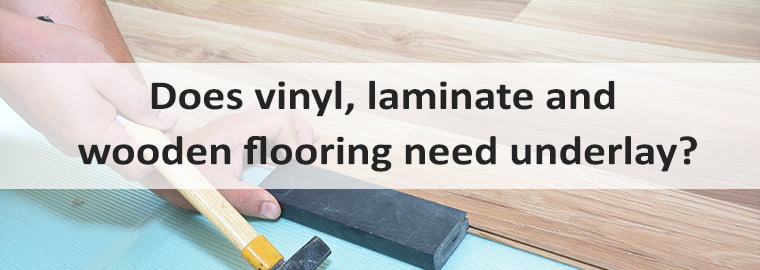A floor underlayment adds a layer of cushion that both makes your steps softer and absorbs sound while protecting your floor on top be it hardwood tile or laminate from wear and tear.
Is underlayment really necessary a for floating wood floor.
The warranty may require it.
With underlayment you can add extra flexibility to wood subfloors.
The underlayment is a buffer to this movement and the floors will last longer.
This will slightly soften the laminate.
An underlayment is a necessity for any wood floor installation even on a plywood subfloor.
Vinyl flooring can be installed as a floating floor.
As with both floors the subfloor and floor move differently due to temp changes.
In that case the importance of underlayment becomes even more visible.
Since the floating floor does not attach to subfloor.
Primarily they act as a buffer between your subfloor and your new flooring.
Yes it is a good idea to get the underlayment.
But what about the underlayment.
Here the best floor underlayments for your needs.
The underlayment pad plays a crucial role in the installation of floating hardwood floors.
Sometimes you choose to use engineered hardwood as a floating floor.
Floor coverings like laminate luxury vinyl or engineered wood flooring may be snapped together to create a one piece uniform surface rather like a jigsaw puzzle.
Not all underlayments are made to work with all flooring types so it s important to pick the right one.
Usually this is appropriate for those who have a really solid surface.
Expansion and contraction have a high chance when moisture exposure come to happen.
Vinyl is similar to laminate flooring in that underlayment recommendations may vary.
From foam to felt to cork there are different underlayment options available and each boasts different benefits.
It can go over wood concrete and most other solid subflooring materials as long as they re level dry and smooth.
All underlayments work around the same basic principles.
The underlayment provides many benefits including moisture protection sound and thermal insulation and a cushion to make the floor more comfortable to walk on.
Underlayment for laminate flooring is a must.
Since laminate is a floating floor it must be evenly distributed across your subfloor.
Laminate floors need an underlayment as the floor moves with temperature changes adds a cushion to the floor and also is sound deadening.
If the flooring feels hollow afterward it could be a problem.
Underlayment is what allows the floor to float gives it stability support noise reduction and supports the locking systems in between planks to assure the sturdiest flooring project.





























